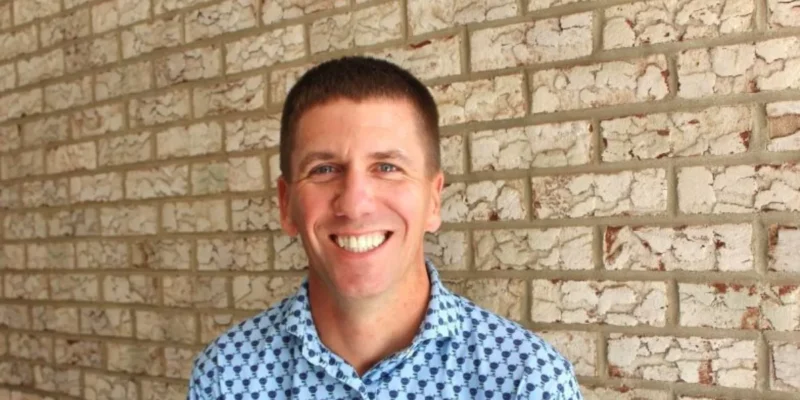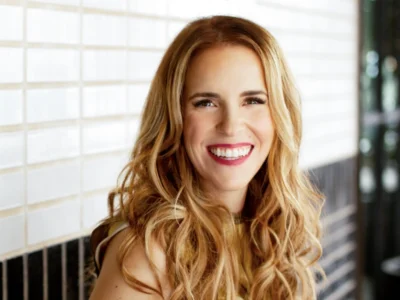
Chad Philip Boyce stands as one of the most talented yet unrecognized forces behind the camera in Vancouver’s film industry. As a second assistant cameraman and valued member of the International Cinematographers Guild 669, Boyce helped shape the visual storytelling of popular shows like The 100. His work in post-apocalyptic TV production showcased his exceptional eye for scene framing techniques and lighting coordination. Though his name might not appear in bright lights, his contributions to cinematography continue to influence the industry years after his passing.
Early Life and Path to Cinematography
Chad Boyce entered the world on September 23, 1978, in Vancouver, Canada. Raised primarily by his father Larry after his mother’s early passing, Boyce developed a strong sense of determination from a young age. His passion for visual storytelling emerged early, with photography capturing his imagination and providing an outlet for his creative vision. This early interest would later bloom into a successful career in the technical side of filmmaking.
Vancouver’s thriving film industry offered the perfect backdrop for Boyce to nurture his talents. He began learning his craft through mentorship under established ICG 669 professionals who recognized his natural eye for composition. These early connections proved valuable as he navigated the competitive world of film production. His mentors helped shape his understanding of camera equipment operation and the intricacies of bringing directors’ visions to life.
Boyce’s professional journey began in 2002 when he worked as a camera trainee on the film “Punch.” This entry-level position gave him practical experience and confirmed his desire to pursue cinematography as a career. He quickly demonstrated his technical aptitude and work ethic, earning respect from seasoned professionals on set. These qualities helped him advance from trainee to the more specialized role of second assistant cameraman.
The transition from novice to professional wasn’t always smooth. Like many in the film industry, Boyce faced long hours, intense pressure, and fierce competition. Yet his commitment never wavered. Friends and colleagues remember his willingness to learn, adapt, and perfect his craft. This dedication would become his trademark throughout his career, earning him spots on increasingly prestigious productions.
Career Breakthroughs and Industry Contributions
Boyce’s career gained momentum as he secured roles on major productions. His work on popular series like The 100, Riverdale, and Wynonna Earp showcased his versatility and technical expertise. As a film crew technician on these high-profile shows, he helped translate creative visions into compelling visual narratives. His contributions, though often unseen by viewers, proved essential to the success of these productions.
The demanding nature of post-apocalyptic settings in The 100 presented unique challenges that Boyce handled with skill. His camera work captured the gritty reality of the show’s premise while maintaining the artistic integrity directors sought. Working alongside other Canadian cinematographers, he developed techniques specifically suited to the show’s aesthetic. This technical innovation became one of his most significant industry contributions.
Within the International Cinematographers Guild 669, Boyce built a reputation for reliability and collaborative spirit. Unlike on-screen actors who receive public recognition, camera operators like Boyce work tirelessly behind the scenes. His colleagues in the Vancouver film industry consistently praised his ability to anticipate needs and solve problems quickly. These qualities made him a sought-after crew member for challenging productions.
Fellow cameraman and friend Mark Davis recalled, “Chad never sought the spotlight but always made sure the lighting hit the actors perfectly. His attention to detail elevated every production he worked on.” This sentiment echoed throughout the testimonials shared after his passing. His technical artistry combined with interpersonal skills created a lasting impression on The 100 camera department and beyond.
Behind the Scenes of The 100: Crafting a Visual Legacy
The visual atmosphere of The 100 owes much to the camera work of professionals like Chad Boyce. The show’s distinct post-apocalyptic visuals required precise technical execution and creative problem-solving. Boyce excelled at both aspects, helping establish the immersive world that captivated audiences. His behind-the-camera legacy lives on through the scenes he helped create.
Cast members from The 100 often commented on the cameramen’s ability to capture emotional moments under difficult filming conditions. The show’s outdoor scenes, frequently shot in challenging Vancouver locations, demanded adaptability and quick thinking. Boyce’s mastery of scene framing techniques allowed actors to perform confidently, knowing their performances would translate effectively to screen. This symbiotic relationship between cast and camera crew proved essential to the show’s success.
The true measure of Boyce’s impact became evident after his unexpected passing in 2018. Producers of The 100 took the rare step of dedicating episode S5E4 to his memory—a tribute usually reserved for prominent cast members or directors. This Chad Boyce tribute episode stands as testament to how valued his contributions were. Few technical crew members receive such public recognition, making this gesture particularly meaningful.
The dedication reads simply “In Memory of Chad Boyce” but carries profound weight among those who understood his role in creating the show’s visual identity. Fans unfamiliar with his name learned of his significance through this tribute, sparking conversations about unsung industry contributors. The substance intoxication tragedy that claimed his life at 39 reminded colleagues of the pressures faced by those working in high-stress production environments.
Earnings, Net Worth, and Financial Impact
At the time of his death in 2018, Chad Boyce had accumulated an estimated net worth of approximately $500,000. This figure reflects his success as a cameraman in Vancouver’s competitive film industry. While modest compared to on-screen talent, this sum represents significant achievement for someone working in technical production roles. His financial journey mirrors the reality faced by many skilled professionals behind the camera.
The primary source of Boyce’s income came from union wages through his membership in ICG 669. As a second assistant cameraman, he earned competitive hourly rates supplemented by overtime pay during the long shooting days common in television production. Project-based earnings varied based on the budget and schedule of each production. Shows like The 100 and Riverdale, with their established audiences and networks, provided relatively stable employment.
Financial security in film production remains an ongoing challenge even for talented professionals. The project-based nature of the industry creates income variability that requires careful planning. Boyce navigated these challenges while building his career and reputation. Fellow crew members noted his practical approach to finances, balancing passion for his craft with the realities of making a living in a demanding field.
The economic impact of roles like Boyce’s extends beyond personal finances to the broader Vancouver film economy. Technical crew members contribute significantly to local spending, equipment rentals, and specialized services. Each production employs dozens of skilled workers whose combined expertise creates the final product viewers enjoy. This economic multiplier effect makes film crews valuable contributors to regional prosperity.
Legacy and Posthumous Recognition
After Chad Boyce’s untimely passing in April 2018, tributes poured in from across the film community. Social media platforms filled with memories shared by those who had worked alongside him. These testimonials painted a picture of a dedicated professional whose technical skill was matched by personal kindness. Former colleagues shared stories of his willingness to mentor younger crew members, passing along valuable knowledge about cinematography.
The International Cinematographers Guild 669 held a memorial service honoring Boyce’s contributions to Vancouver’s film industry. This gathering brought together family, friends, and professionals who had crossed paths with him during his career. Speakers highlighted not only his technical abilities but also the positive energy he brought to often stressful film sets. His ability to maintain calm professionalism under pressure became a recurring theme in remembrances.
Boyce’s legacy continues through the work of those he inspired and mentored. Several ICG 669 training programs now incorporate lessons drawn from his approach to cinematography. These educational initiatives ensure his technical knowledge and work ethic influence the next generation of camera operators. The emphasis on both skill development and mental health awareness reflects lessons learned from his experience in the industry.
His story has sparked important conversations about recognizing the contributions of technical crew members. Organizations like the ICG now place greater emphasis on acknowledging the collaborative nature of filmmaking. This shift toward appreciating all roles involved in production represents a positive change in industry culture. Boyce’s legacy includes this growing recognition of behind-the-scenes professionals who make visual storytelling possible.
Lessons from Chad Boyce’s Career
Chad Boyce’s career teaches us the profound impact one person can have behind the scenes. While directors and actors receive public acclaim, the vision they create depends entirely on skilled technicians like Boyce. His work demonstrates how cinematographers shape our viewing experience through countless technical decisions viewers never consciously notice. Each frame of The 100 bears the invisible fingerprints of camera operators who brought fictional worlds to life.
The physical demands of camera work remain underappreciated by most audiences. Heavy equipment, long hours standing, and challenging shooting locations create significant strain. Boyce excelled despite these challenges, maintaining focus and creativity through grueling production schedules. His experience highlights the need for sustainable practices in film production. The industry continues wrestling with balancing artistic demands against human limitations.
Colleagues consistently mention Boyce’s humility as one of his defining traits. Despite his technical mastery, he approached each project with openness to learning and collaboration. This mindset allowed him to adapt to evolving technology and changing production methods. Young professionals entering the field would benefit from adopting this same approach. Technical skills matter, but attitude and adaptability often determine long-term success.
Celebrate Chad Boyce’s legacy-share your thoughts and stories in the comments below and join the conversation on thriveverge.co.uk.





